Dear Friends and Colleagues,
Happy New Year 2014!!!
This is the first time that I’m sending new year greetings from the lidar observatory while running the lidar for data! I hope that the special greetings bring you an exciting, prosperous, and energetic year 2014!
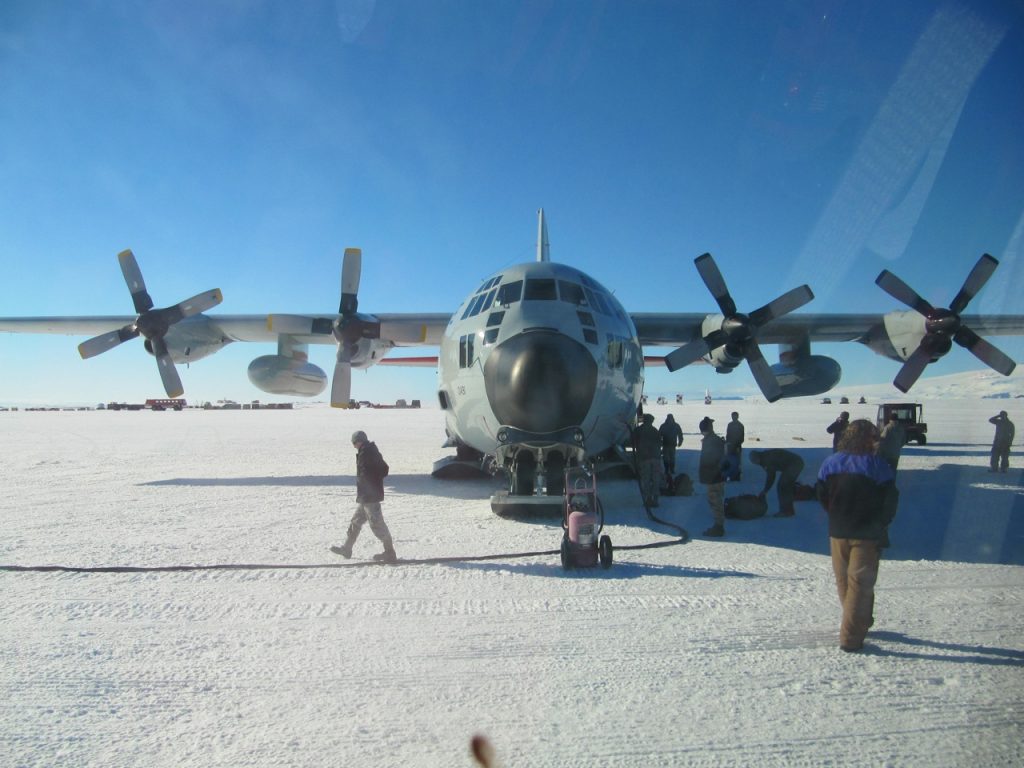
My flight out of Denver was delayed for a day but I arrived in McMurdo one day ahead of schedule. Does this sound a bit strange? This was what actually happened to my 8th journey to Antarctica. This trip also marks the beginning of the 4th year of our McMurdo lidar project. Our first-year graduate student Jian Zhao and I arrived at McMurdo in the night on Dec. 23rd, 2013, one day earlier than the originally scheduled Christmas eve arrival (Dec. 24). Our route was from Denver to Auckland, and then to Christchurch — the gateway to Antarctica. After trying the ECW (extremely cold weather) gear at the Clothes Distribution Center (CDC) in Christchurch, we took an ice flight to McMurdo. This usually takes multiple days considering the cross of international day line. The earlier arrival meant that I was rushed through Christchurch, but it wasn’t a bad thing as we had a chance to see the trans-Antarctic mountains, glaciers and the southern-most live volcano (Mt. Erebus) through the clear skies.

This year we flew in with a LC-130 airplane, which is a C-130 (Hercules) military airplane with ski-equipped landing gear for ice (see the 1st photo). Such LC-130 airplane was also the plane we took to fly to the South Pole in the past and present time. As we were again rushed from the airplane to an “Ivan – the Terra Bus”, we didn’t even have a chance to take a nice shot on LC-130 but had to do it through a shuttle window. This time I also got a new type of boots, which combine the advantages of blue boots and bunny boots, i.e., they have the comfort as the blue boots but adding ankle support like the bunny boots. Such new type of boots are really nice for standing on the ice for a long time. That’s why I looked so happy with them in the 2nd photo.
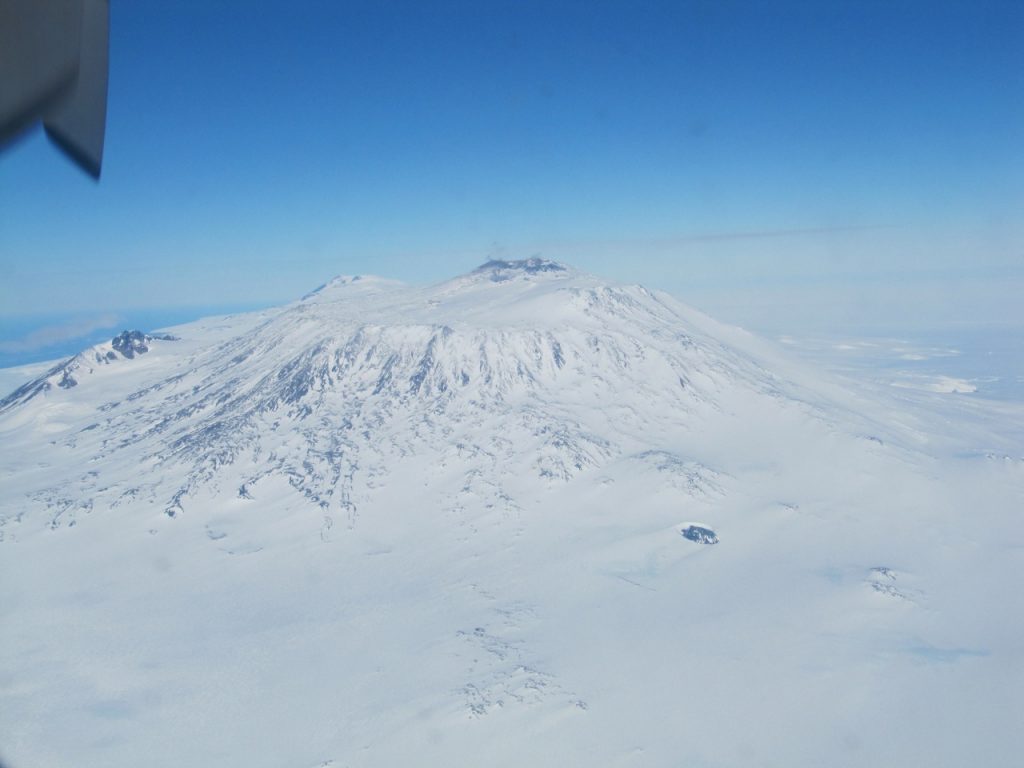
Shown in the 3rd and 4th photos is the live volcano Mountain Erebus. One is an aerial view from the LC-130, and another is from the Pegasus airfield (McMurdo airport on the permanent ice shelf). It’s not difficult to get a shot on Mt. Erebus from McMurdo ground, but the aerial photo is the first time for me, which shows the sides of Mt. Erebus that we normally don’t have a chance to see.
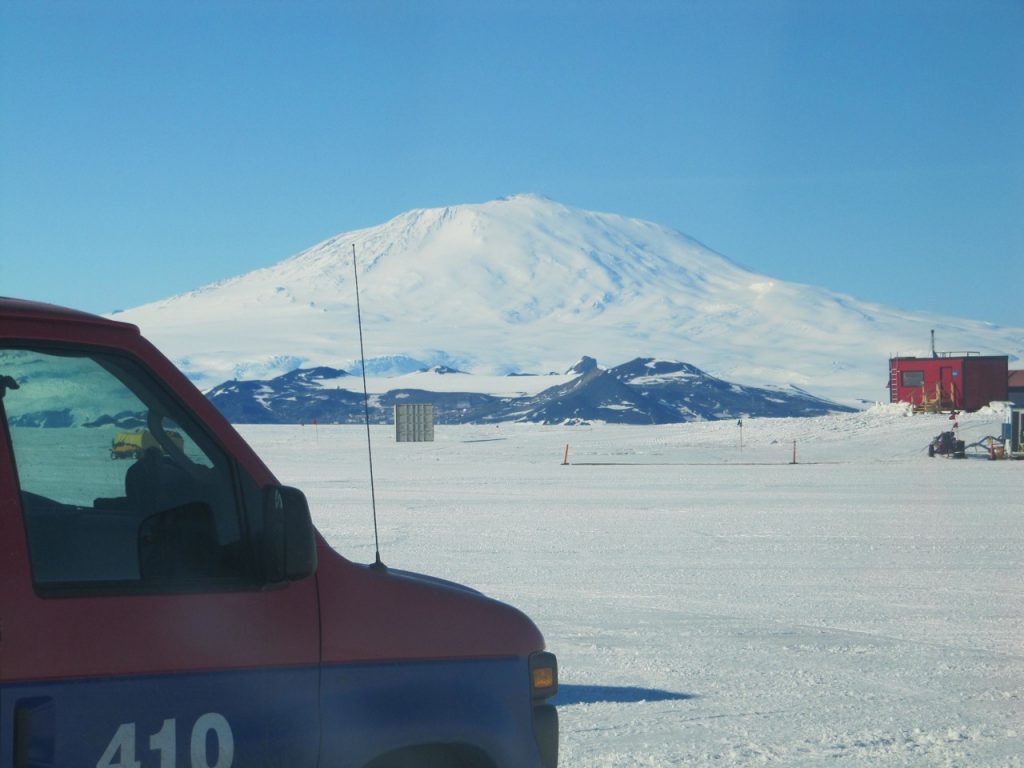
The weather was really nice with clear sunny sky. We managed to “call” Arrival Heights from the Terra Bus and our PhD student Chris (Cao Chen) was running the lidar for data! In the following two days Chris ran the lidar for 48 hours with some help from Jian and me. By 4pm in the afternoon on Dec. 25, the sky became cloudy so we shut down the lidar without guilt, and then we three drove down the hill to have a wonderful Christmas dinner together. We all were thrilled by the lobsters, especially Jian in his first-ever trip to Antarctica (see his Christmas dish at McMurdo in the 5th photo).
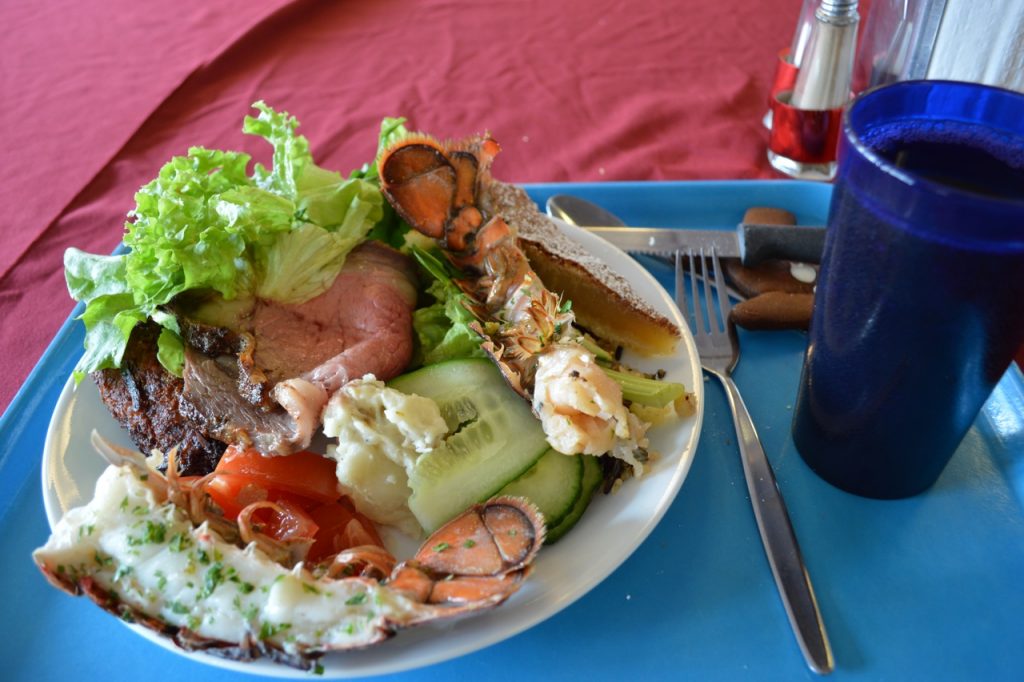
Chris and Jian installed two new choppers designed and made by our PhD student John Smith. It turns out that John’s innovative design has made the choppers extremely stable — we got solid chopper functions and lidar profiles. Chris is training Jian on the lidar operation very well, and Jian is catching up very fast. Within 7 days, Jian can turn on the lidar with Chris’ supervision and then watch the lidar by himself for many hours. Since the night of Dec. 29th, the sky cleared up again. Chris and Jian turned on the lidar and started to take data since 11:30pm on Dec. 29, 2013. The lidar is still running after 60 hours by now 11:30am on January 1st, 2014. The portrait in the 6th photo are the two very bright students Jian Zhao (left) and Chris Chen (right) sitting on the roof of Arrival Heights lidar observatory (Kiwi’s building) in the night of Dec. 30, 2013. In front of them is the opened lidar hatch, and behind them you can see Mt. Erebus and the 2nd crater along with USAP Arrival Heights building 197.
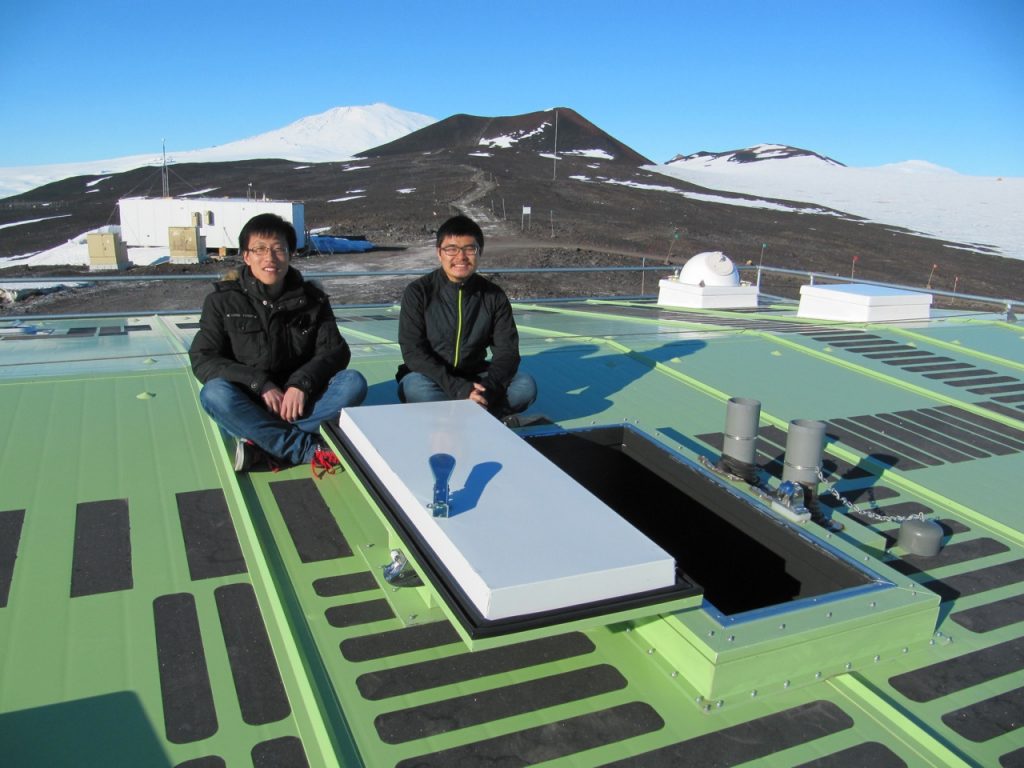
It came to the new year’s eve on Dec. 31st, 2013. McMurdo station runs “Ice Stock” — a musical festival to celebrate the new year. It’s the 25th ice stock this year. I really wanted to give Chris and Jian the chance to enjoy ice stock, so I drove up to run the lidar (by safety rules the lidar must be tended to). The 7th photos illustrates the first ice stock under the sunshine blue sky — the last three ice stocks were in cloudy, windy and cold nights. The tall hill in the background is the Observational Hill. Building 155 (with galley in it) and Crary Lab are on the left and right sides, respectively.
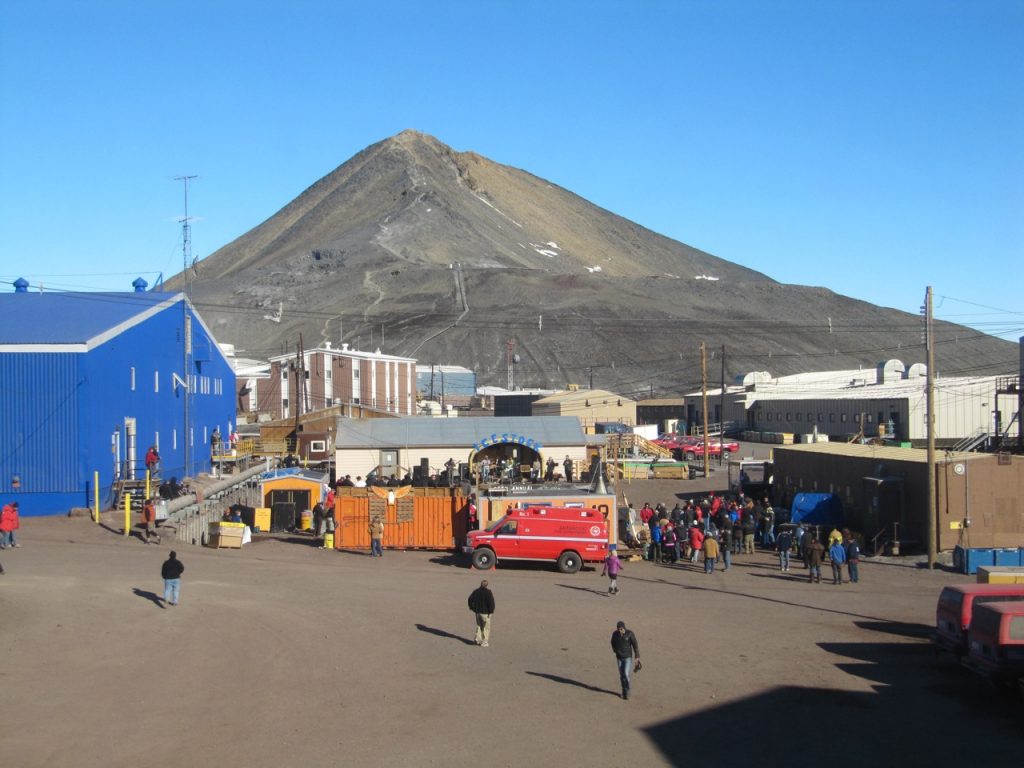
The Mac-town is basically snow-free during summer season. Two more photos (the 8th and 9th) show the beautiful ice stock.

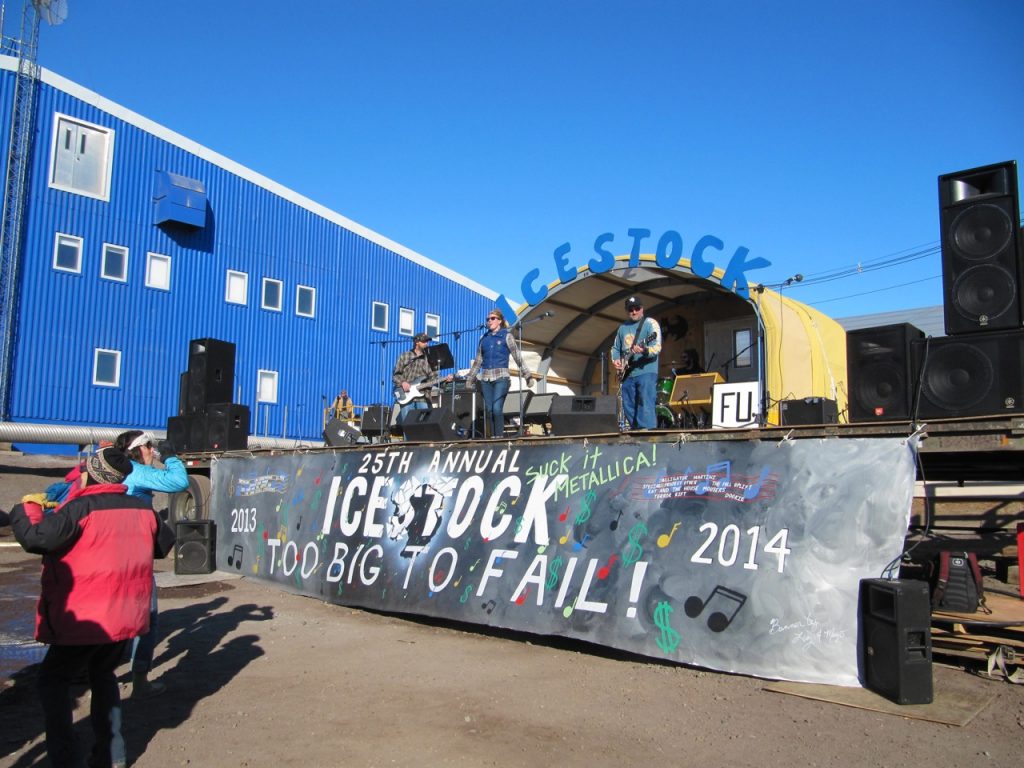
One of the designers for this ice stock is Mr. Holly Troy who was doing chili cooking in the 10th photo.
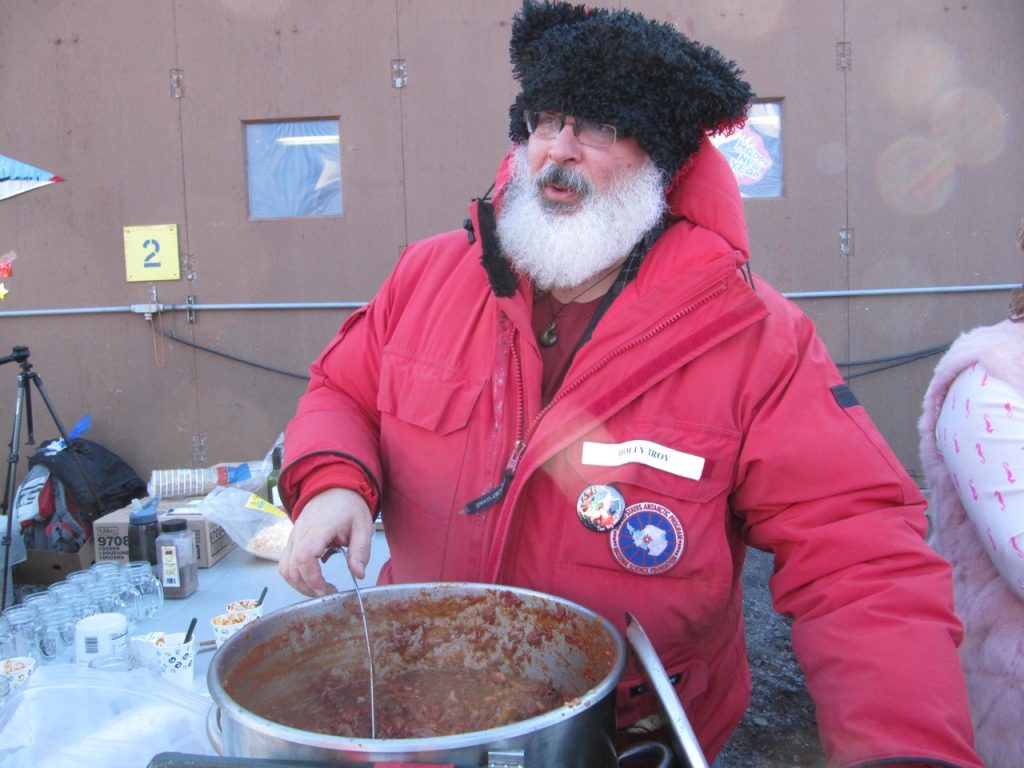
After counting down to the new year bell, Chris and Jian drove up to Arrival Heights, and we three greeted “Happy New Year” to each other. Facing the midnight sun, the 11th photo witnessed our lidar team at the Arrival Heights observatory on January 1st, 2014.
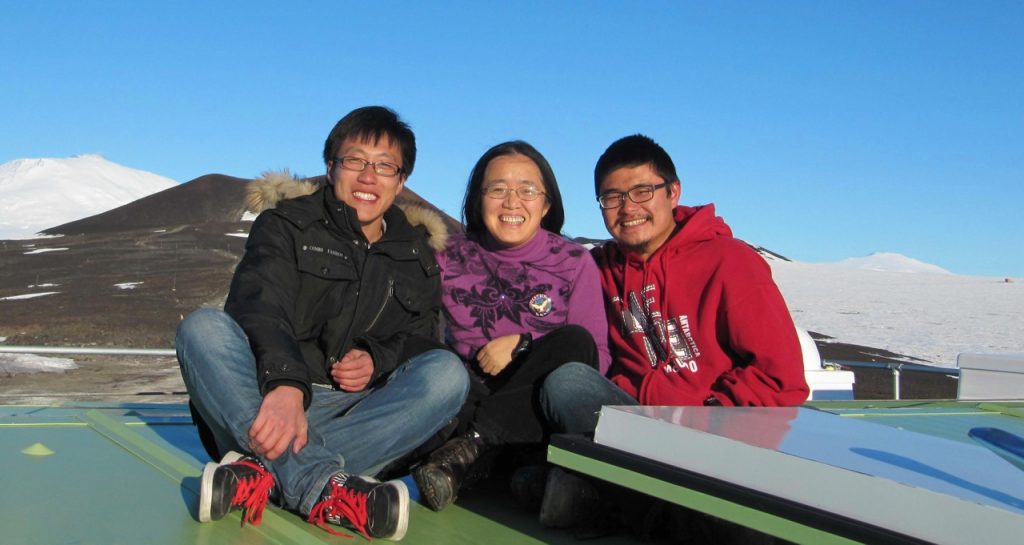
I am really impressed by how hard our lidar team members have worked and how productive our lidar team members are in the last four years. From Dec. 9-12, 2013, Chris managed to run the lidar and collect data continuously for 62 hours by himself!!! May I say that Chris tries to make new lidar records at McMurdo?! Indeed I have been happily watching that new lidar records were set and then broken and reset by our lidar team members. Our 3rd winter-over lidar student Weichun Fong had an outstanding year from late August 2012 through October 2013, and just returned to Boulder not a long ago after his 14 months of lidar work in Antarctica. Weichun’s measurements on June 1st, 2013 set the highest altitude record of lidar detection to date — neutral Fe layers up to 170 km in the thermosphere, which is a new science discovery! On the lidar data length records, our 1st winter-over student Zhibin Yu set a record of lidar detection of Fe layers up to 155 km and made a continuous run of 26 hours in the Antarctic winter 2011; then Wentao Huang made a single-operator lidar run for 36 hours in summer 2011-2012; then our 2nd winter-over student Brendan Roberts set a new record of 48-hour in the Antarctic winter 2012; and now Chris made a new record of 62-hour continuous lidar run. A total of about 3500 hours of lidar data have been collected so far. Many new science discoveries have emerged from these data. Many papers have been published, and many more are on the way. Facing these fantastic records and absolutely beautiful lidar data, I am speechless. The only thing I can say is that I am so lucky to have these very bright and creative students and scientists who love lidar and atmosphere/space science!!!
All greetings are from our hearts: Wish you a wonderful, healthy and extremely happy new year 2014!
Sincerely yours,
Xinzhao
